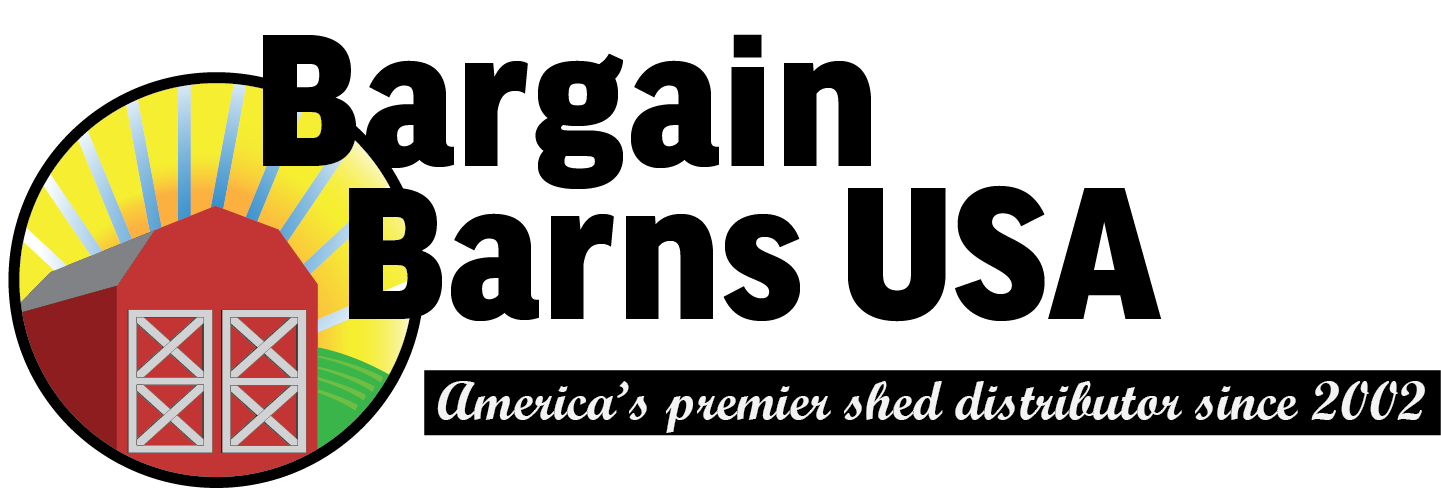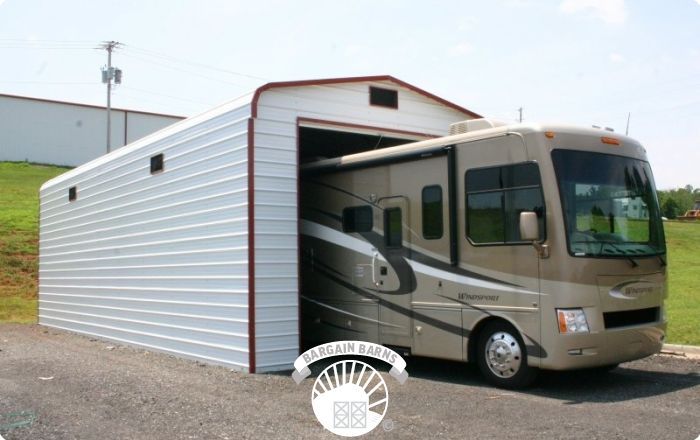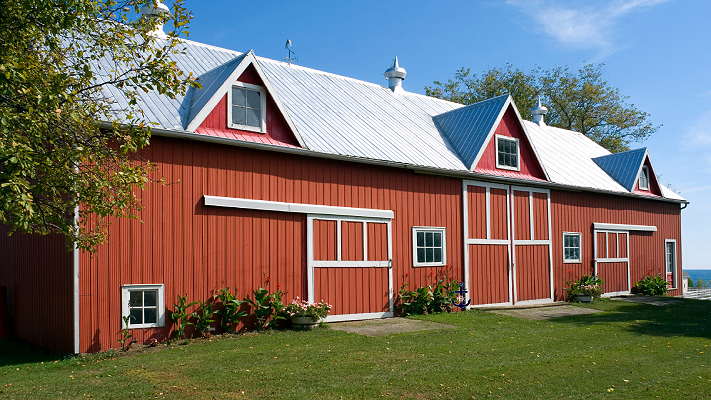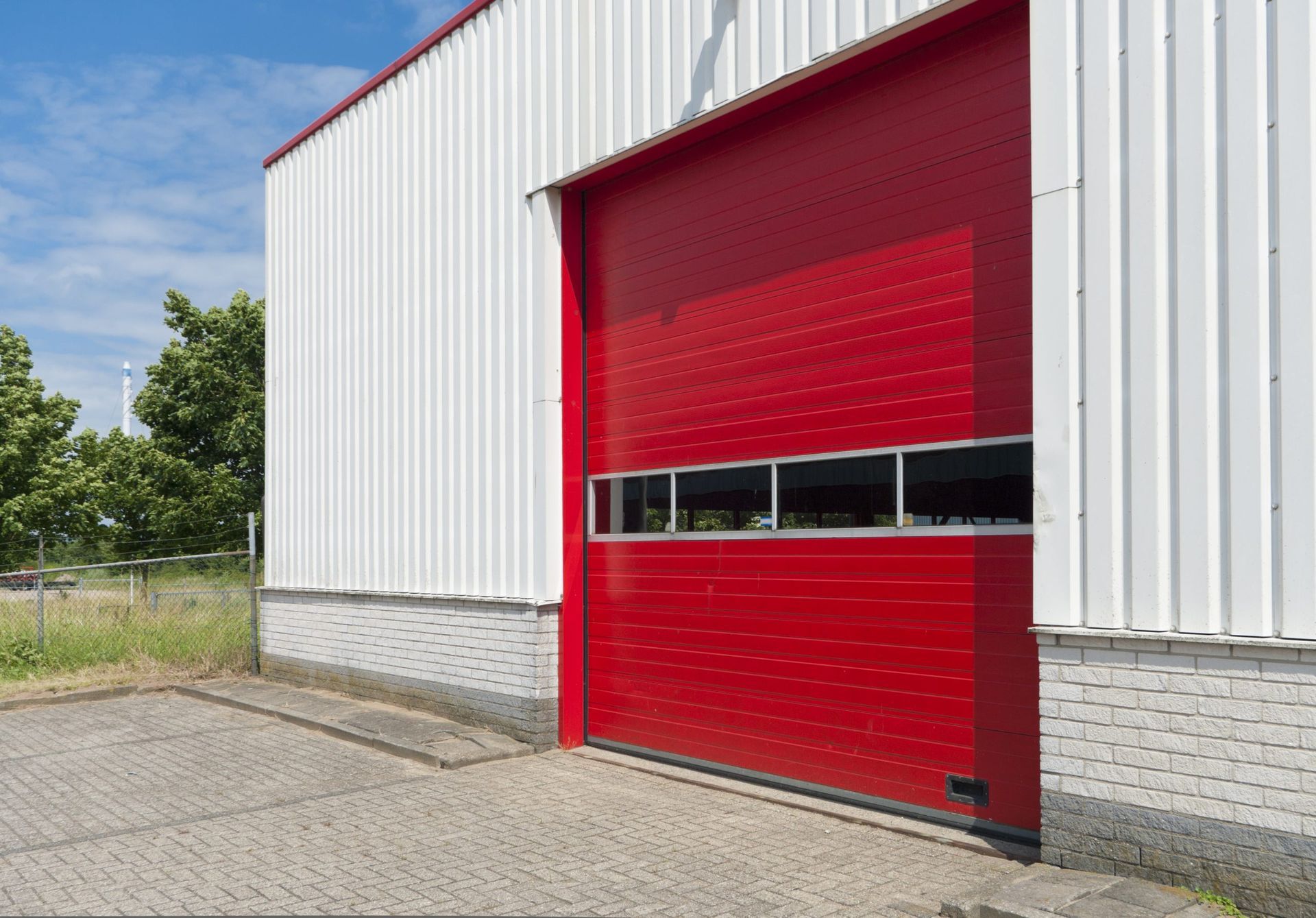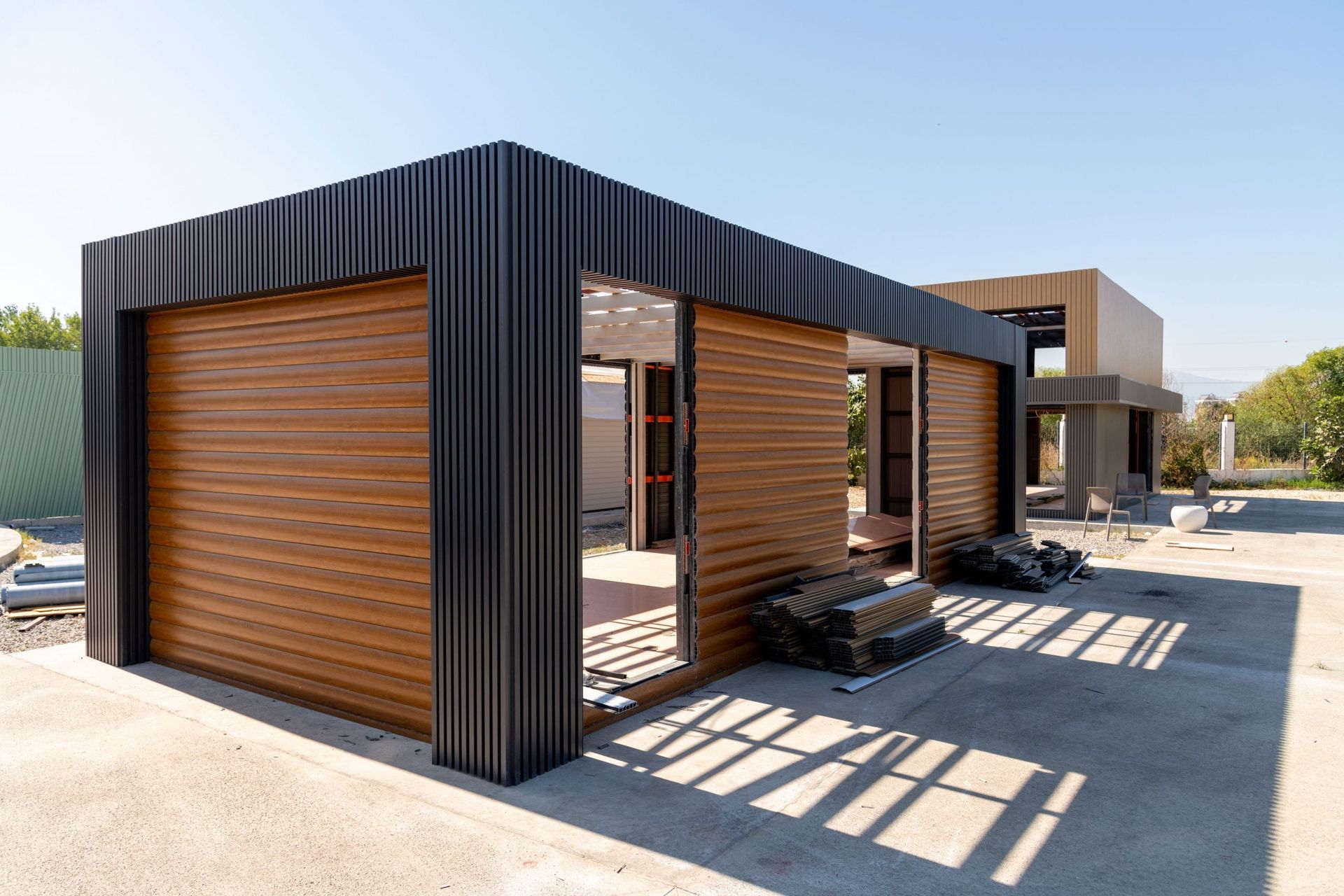7 Reasons to Get A Metal Building In 2021
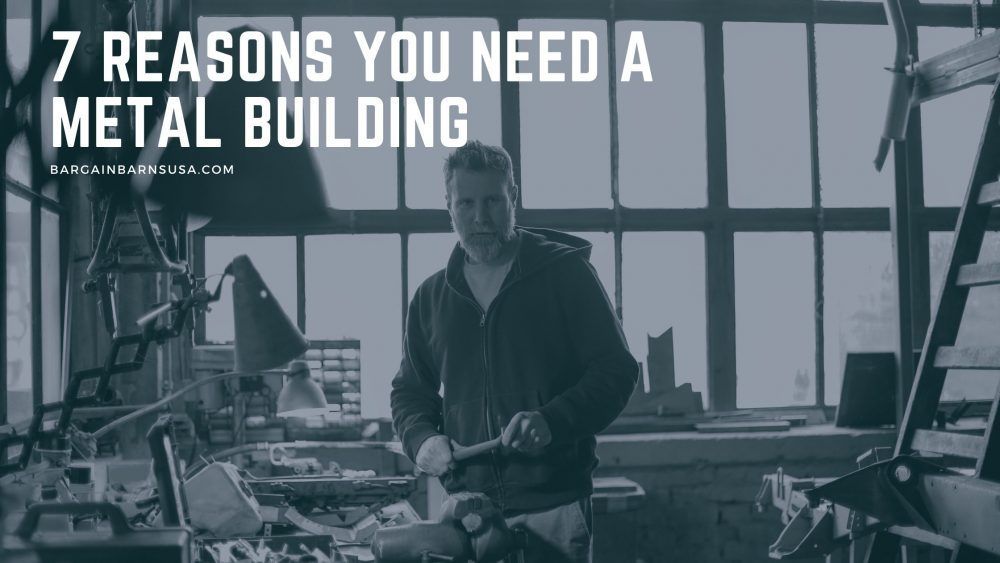
There’s no better time to increase your property value by adding a metal building to your property. There are a lot of benefits to adding something like a metal building to your property (which we’ll dive into shortly), but not only that, they can be heavily customized to match your unique needs. In this article, we break down all of the benefits and answer common questions we hear in regards to metal buildings.
While there are a lot of types of metal buildings, we’ll be using steel as an example for our blog, as that is the most common.
We cover a variety of topics in this post, so feel free to use the table of contents below to jump around as needed!
Four Things to Consider Before Building Any Metal Building
Reason One: They’re Easy to Maintain
Reason Two: Metal Buildings are Perfect for Farms & Ranches
Reason Three: You Can Protect Your Livestock
Reason Four: They’re Easy to Convert
Reason Five: They’re Environmentally Friendly
Reason Six: A Metal Building Will Save You Money
Reason Seven: They’re Oklahoma Strong
Four Things to Consider Before Building Any Metal Building
Even though a steel shed or storage building is a great investment for almost every home, there are a few things you should consider before installing your own metal building. Not every steel building is created equal, and you’ll want to look closely at your needs and your property before installing a metal building. Here are some of the biggest things to consider before you pick which shed you want next to your home.
What You Will Use It For?
When you’re choosing a metal outbuilding, probably the most important consideration is what you’ll actually use the building for. While most people still use their metal buildings for tool and equipment storage or an attic overflow, metal buildings are very flexible and can be used for much more.
For instance, you can easily turn a shed into a workshop, outdoor office or writing space, or even a small guest house. However, if you plan on using your new building for anything other than storage, you’ll want to pick a design that can handle expanded use. Fortunately, it’s simple to customize your building to your needs with options like doors, windows, roof vents, and power supplies.
Who Will Do the Work?
Unless you’re a construction professional, chances are you don’t have the time, experience, or resources to construct a steel building on your property alone. Before choosing a building, make sure you know what it will take to put it together and how long the construction process will be.
Many metal building companies offer construction services for their products, but not all of them do. Furthermore, some will only construct on a prepared site, while others can help get your property ready for a new metal building. You’ll need to check what your preferred vendor can do when you place an order to ensure you’re prepared.
Where You Will Build It?
Along with choosing the right metal building for your needs, you’ll need to make sure you have a proper site to put it on. A good site for any steel building is leveled and strong enough to take the weight of the building without settling or shifting underneath. Many people choose to pour a concrete or cement pad for their building, but they can go on almost any surface including gravel, grass, and asphalt.
However, be careful that your site isn’t near any flowing water that could cause the ground to erode or shift. If you choose your site carefully, your building will last much longer and remain stronger over time.
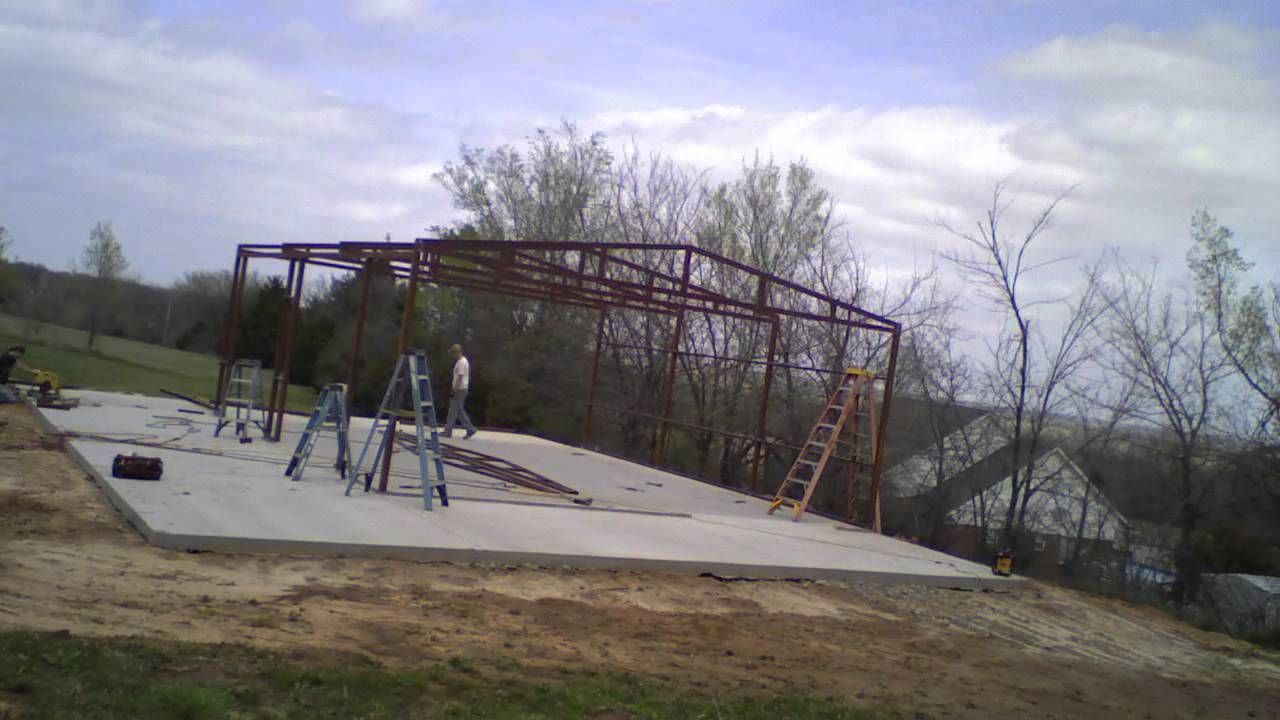
What Permits You Need
Every city, town, and state is different. Building a metal building in one town can be a simple and straightforward process, but just a few miles away it can involve miles of red tape.
Before you start building, make sure you (or the company building the shed) have the right permits and other documentation you need to erect your steel structure. The last thing you want is for your project to get shut down for being built without a permit or for not being up to code. Always do your research and planning ahead of time so you can stay in front of any problems.
Reason One: They’re Easy to Maintain
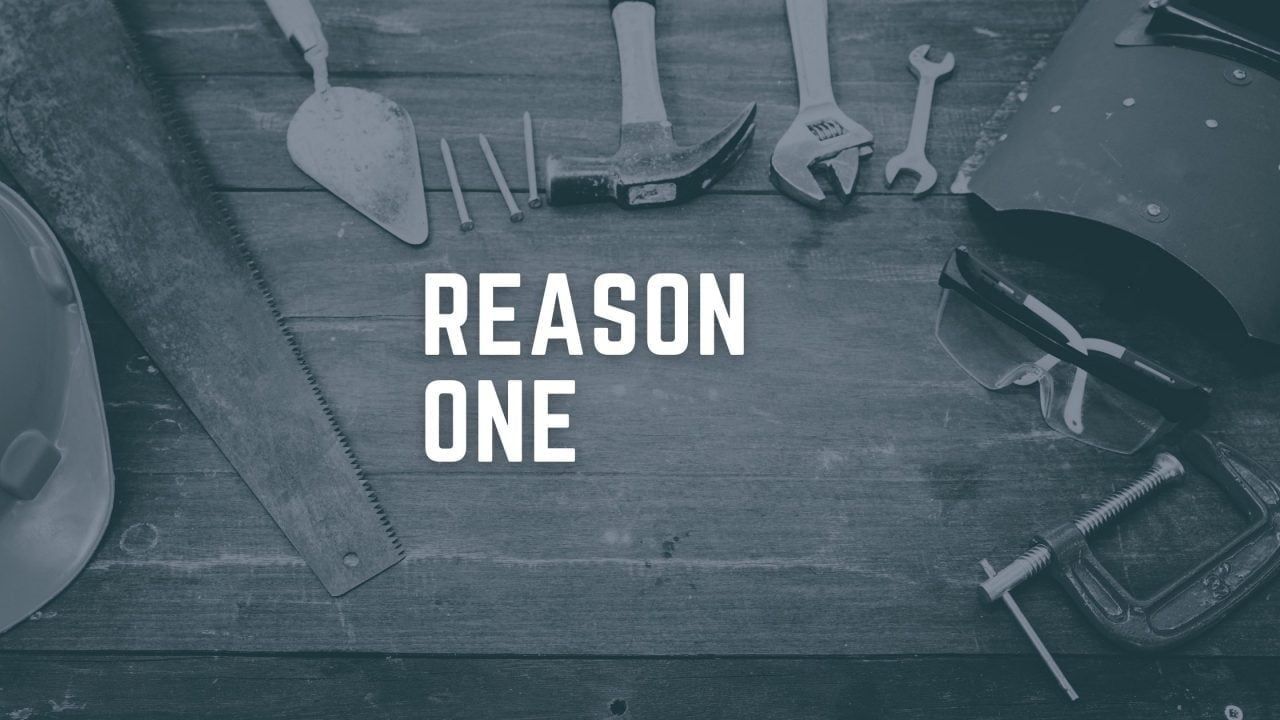
One recommended policy to follow with a metal shed or building is to wash it once a year. If you live in an area that’s particularly humid or close to the ocean, more frequent cleanings – say, every three months – are a good idea.
If you have a smaller building, you can simply mix some household cleaner with water in a bucket and use a scrub brush to clean the panels. If you have a larger or taller building, you may want to use a pressure washer – just make sure to turn the pressure down!
Your goal is to remove dirt and buildup that can trap moisture or damage the finish; you don’t want to strip the metal. Also, if you find mildew or fungus on your building, you can mix a small amount of bleach into your cleaner to take care of it.
Additionally, you’ll want to look at the overall condition of the metal and make any repairs that you can. If any fasteners or rivets are missing, you can either refasten the panels yourself or call a professional to take care of the job. Either way, performing repairs in a timely manner will greatly extend the life of your shed or barn.
During these inspections, you’ll want to keep an eye out for damage caused by water or any cracks or bends in the metal or paint. Precipitation and water exposure is the biggest danger to a metal building since even the treated metal used in metal barns and sheds can rust if left unattended.
Rust usually starts at the edges of panels or in places where water can pool, such as the base of the panels or any seams. Make sure to look closely at these areas when performing your inspection.
Beyond this simple inspection and cleaning schedule, metal buildings basically take care of themselves. If you want to learn more about choosing and taking care of a steel garage, barn, or other outdoor building, contact us today at Bargain Barns USA. Or, you can follow us on Facebook to get the latest news and special offers!
Reason Two: Metal Buildings are Perfect for Farms & Ranches
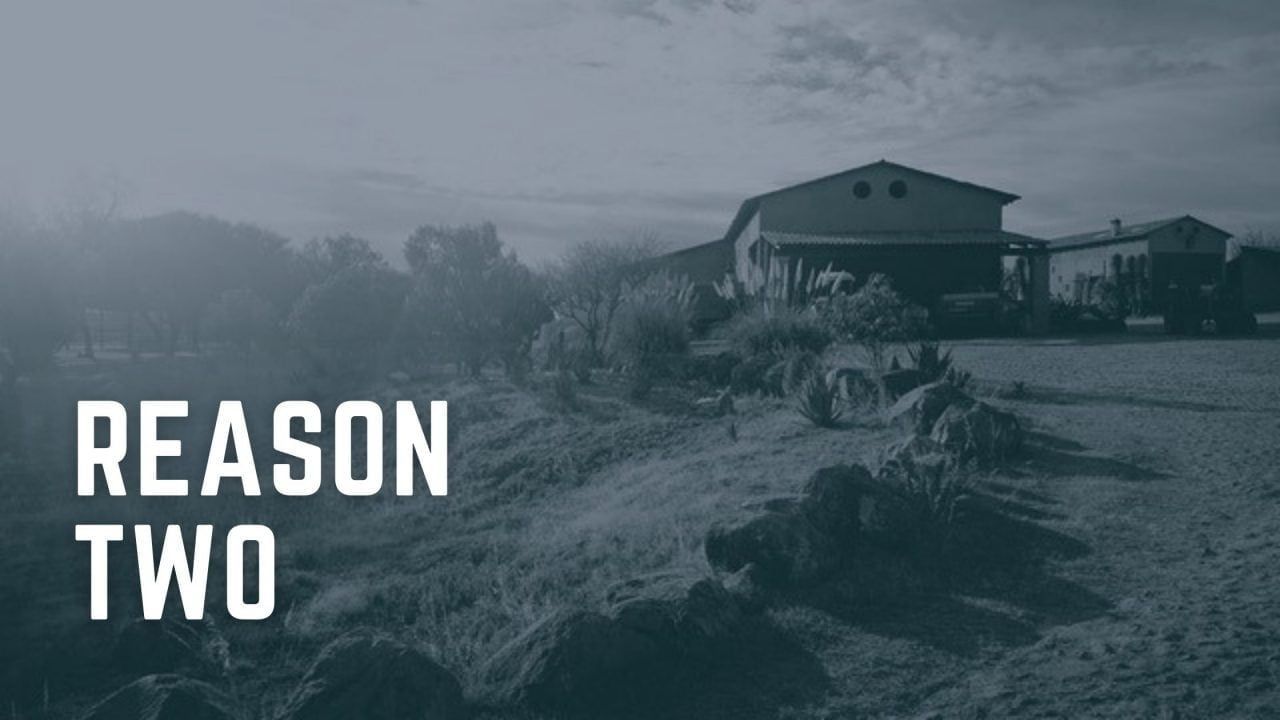
When you rely on a farm or ranch for your living, you need storage buildings that are tough, dependable, and long-lasting. A steel storage building from Bargain Barns USA fulfills all those criteria. Our metal barns and storage buildings are the best way to shelter your feed and equipment from the elements and keep them safe.
Bargain Barns offers a wide variety of metal barns and farm shelters to suit your needs. Our metal barns are constructed of steel panels with a tubular steel frame, making them exceptionally strong and hardwearing.
You can pick from a variety of other metal buildings and shelters for your farm or ranch. Whether you need open-sided equipment storage, a hay storage building, or a feed shelter, there is a metal building to satisfy your need.
What are the advantages of using a metal building or shelter on your farm or ranch?
- Durability – A metal barn or shelter is far stronger than a wooden building. Metal buildings won’t rot or warp over time, and they stand up to termites, ants, and other pests far better than wood. You’ll also see much less maintenance on a metal building, letting you spend time on more important things.
- Speed – Metal buildings can be built in just a fraction of the time it takes to build a wooden one. That means you get your farm or ranch in working order faster, with less downtime or interference. When your farm’s margins depend on exact timing, or you have animals you need to shelter, that difference matters.
- Cost – Along with faster assembly, a metal storage building is often cheaper than a wooden building of equivalent size. Metal parts cost very little to manufacture, and the lighter weight brings shipping and assembly costs down as well. Installing a metal building can be a great way to save when you need storage or shelter.
- Appearance – We might be biased, but we think that metal barns and storage buildings just look better than wooden ones. And because metal buildings hold their color better than painted wood, they keep their appearance longer with less upkeep. Your barn will look like you just installed it for years to come.
Reason Three: You Can Protect Your Livestock

Anyone who owns animals knows how important their safety and security is. When it comes to keeping them safe and secure, a well-built barn is vital. Many livestock owners think that wood barns are still the best option for keeping their animals safe, but metal barns are becoming a much more popular option as well.
The perks of choosing a metal barn over a wooden barn are:
- Metal barns can carry heavier loads of snow.
- Your metal barn will come with a longer warranty.
- Your barn will provide better protections and hold up longer under fires
Reason Four: They’re Easy to Convert
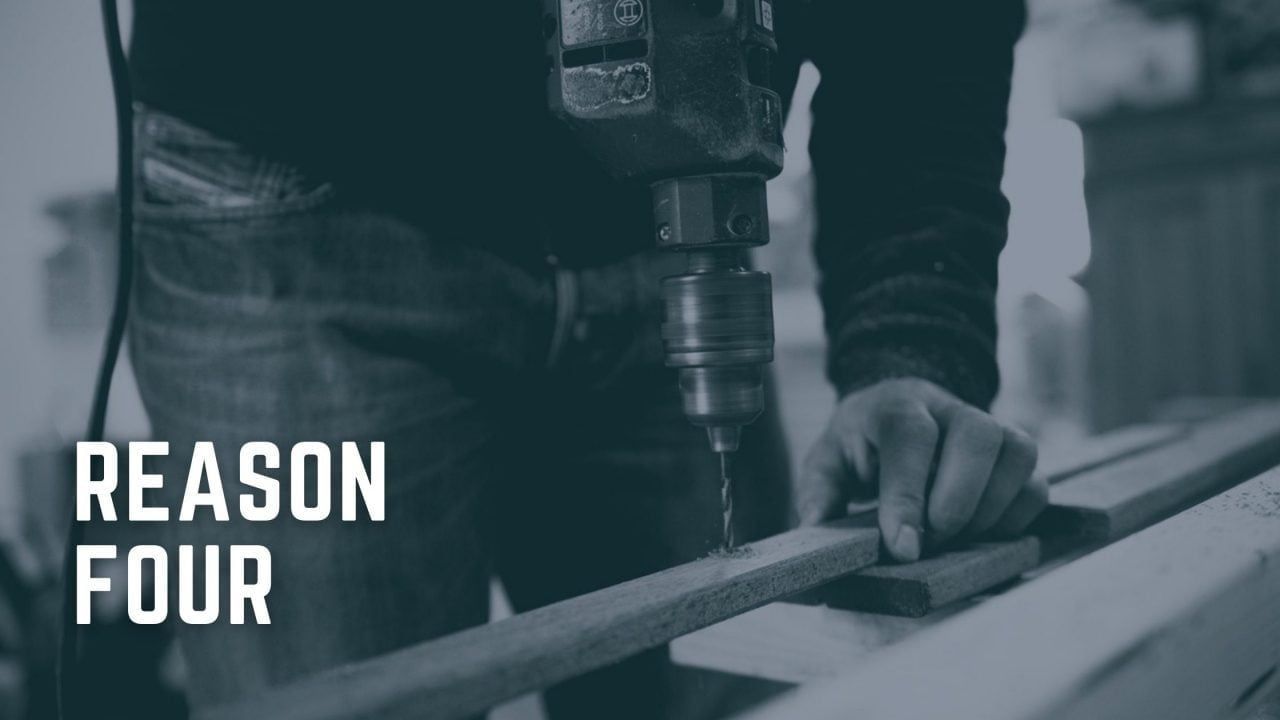
One of the best things about metal buildings is their versatility. A metal shed or outbuilding can provide protection for equipment and tools, serve as a garage for your motorcycle or a project car, or even work as a new room. While it might seem like a huge project to convert your steel shed into a detached living space, it’s actually simpler than it sounds!
Let dig into the basics:
Step 1: Choosing The Right Shed
Many buyers select a metal building with the goal of turning it into an office or outdoor room from the start. In that case, you’ll need to choose a shed that suits this purpose.
Depending on your space requirements, either a metal garage or a weld-up building is a good choice for a home office. These buildings are enclosed and watertight, and they can be easily outfitted with doors, windows, and other accessories to make the space more comfortable.
Step 2: Readying the Interior
Once you have a shed picked out, you’ll need to decide how you’re going to outfit it. Some metal building owners also want to add plumbing to their work space, but this is a much bigger job than electricity and you likely won’t be able to do it yourself.
After installing an electrical system, it’s time for the walls and floor. Many metal building owners choose to install drywall in their shed, since it’s easy to work with and inexpensive. If you’ve ever installed drywall before, the process in a metal building is similar, but with one important change. Instead of drywall nails, you’ll need to use self-tapping screws to install drywall on the metal studs inside your steel shed. Nails won’t hold against the metal, so skip the hammer and get your power drill ready!
You’ll probably also want to install some additional insulation between the metal walls and the drywall. Spray or loose fill insulation is good for this, since it can easily fall down into the spaces between the studs. If you choose mat or roll insulation instead, you’ll need to install it before hanging your drywall.
Finally, the floor will also need some attention. Popular choices for home office flooring include carpet and hardwood paneling, both of which can be installed over the concrete footer. Remember to first install some foam or hardboard insulation on top of the concrete, as well as a layer of plywood or other material to secure the floor to. Also, make sure there are no gaps between the concrete and the bottom of the shed that could let moisture in from the outside and ruin your flooring.
Step 3: Making it Comfortable
Unless you want to keep the windows or doors open all year, you’ll probably need some ventilation into your office space. Roof vents are a simple and effective way to increase airflow into the interior of your steel building without much trouble. Experts recommend installing simple dome-style vents only if your shed will have an “attic” space. If you’re going for full-height ceilings, continuous ventilation along the top edge of the roof is a better idea.
Trim is another important part of making your metal building feel like a part of your home. Compressed wood or plastic trim is cheap and easy to install around door and window frames, making it a good option for use in sheds and metal buildings. Some homeowners prefer to take pictures of the trim inside their homes and match the new trim to it as much as possible before buying.
Finally, once the walls and floor are complete, you’ll need to finish the electrical system by adding plates and light switches, as well as installing other fixtures and eventually furniture. Though it may seem like a lot of work, a dedicated do-it-yourself-er can convert a metal shed into a comfortable and attractive office space in just a matter of days.
Reason Five: They’re Environmentally Friendly

If you’re looking to build an environmentally-friendly metal building, building it from wood might seem like the obvious choice. After all, wood is renewable and biodegradable, which makes it the most environmentally conscious, right? Wrong!
Steel buildings are every bit as “green” as wooden ones, for a few reasons:
Recyclability
The single biggest green benefit of steel is how recyclable it is. Steel recycling is a huge industry, and recycled steel accounts for a huge portion of all the steel used in modern construction. According to the American Iron and Steel Institute, steel is the single most recycled material on Earth in terms of weight – in 2014, 86 percent of all disposed steel was recycled into new products.
What makes steel so perfect for recycling?
Recycled steel’s chief draw is that it is every bit as strong and durable as new steel. In fact, of every three tons of new steel produced in North America, two tons of it is produced from recycled steel. This makes it extremely environmentally-friendly, as the use of new resources is far lower than with other building materials.
Steel’s strength and durability give it other environmental benefits as well. One such benefit is a long lifespan. Steel buildings have a much longer useful life than wood buildings due to their structural properties. Whereas wood rots or degrades over time, steel remains strong over many years.
Because steel’s lifespan is longer than that of other materials, it actually uses less materials and resources. A wood building may need to be repaired several times over the course of its lifespan in order to stay functional. In contrast, steel buildings rarely need major repairs or replacements – once they’re built, they stay up. That makes a metal building a much more environmentally friendly option over the long term.
Ease of Construction
The green benefits of steel aren’t just related to its strength. Another great fact about steel buildings is that they are extremely easy to construct compared to other materials.
Why is this a green benefit? Because they’re quick to construct, they require less resources and man-hours to build. They take less energy and fuel to put together, and steel’s light weight also makes it easy to transport. Additionally, steel structures can be expanded much more easily than other building types – it’s simple to add additional pieces to a steel building. This makes them very green compared to buildings made of other materials.
Energy Efficiency
Though many still have the perception that steel buildings are difficult to insulate and keep at a constant temperature, this couldn’t be farther from today’s truth. Modern steel structures are every bit as energy efficient as buildings made with more expensive and time-consuming construction methods.
Several new techniques and methods have contributed to this boost in energy efficiency. For instance, steel buildings can now be made with factory-insulated panels that boast insulation values that rival traditional wood-frame construction with batted or blown insulation.
Another advance is the roof – steel roofs can now be made with special coatings or pigments that help reflect light and solar radiation, keeping the whole building cooler. These “cool metal roofs,” as they’re known in the steel building world, have the capacity to save an owner thousands of dollars in cooling costs in warmer climates.
Reason Six: A Metal Building Will Save You Money

There are a number of factors that make metal buildings less expensive to construct or maintain than an equivalent wood-framed building.
Lower Construction Costs
The biggest money-saving aspect of metal buildings is that they’re cheaper to construct than wood-framed structures. Steel is lighter and easier to handle than wood, meaning it’s easier and cheaper to transport.
It also results in less waste, meaning the cost of cleaning up your building site is lower. And because every component in a steel barn or steel garage is machined precisely to fit the other parts, construction goes faster than it does with wood. All of these factors combined result in significant cost savings over traditional construction techniques.
Lower Maintenance Costs
Maintaining your new steel garage or shed is far easier than maintaining a wood-framed building. Wooden frames are subject to a number of problems, including damage from insects like ants and termites, rot and moisture damage, and warping and buckling after exposure to the weather. Metal buildings don’t have the same problems and are overall much simpler to maintain; they also handle inclement weather much better than wooden ones. For many customers, a quick yearly wash is all that’s needed.
Lower Insurance Rates
Potentially the biggest drawback of a wood-frame building is its vulnerability to fire and other problems. Most wooden buildings have a “C”-level fire resistance rating, meaning they are somewhat vulnerable to fires. Compare this to the “A”-level rating of metal buildings, which means they are highly fire-resistant.
But this better rating doesn’t just mean that metal buildings are safer than wooden ones (even though they are). It also means your insurance rates and premiums can go down, saving you more money over time. This can be a big advantage to homeowners and businesses alike.
Reason Seven: They’re Oklahoma Strong

Here in Oklahoma, wind is an issue for any building. Even without the threat of tornadoes, Oklahoma is known for the strong winds that sweep across the hills and plains. It’s not uncommon for straight-line winds to blow in excess of 50 or 60 mph! This can put an enormous strain on any building – which is why it’s important to consider wind load any time you build a new structure. Fortunately, steel buildings are perfect for Oklahoma’s windy climate.
Factors for Wind Resistance
When it comes to standing up to wind, there are several important factors you need to consider.
Exposure Rating
The first step to creating a wind-resistant building is knowing how much of a threat wind poses. Even in windy areas like Oklahoma or Texas the wind can be highly variable. One way to calculate the wind threat to your building is to have a building engineer determine your site’s exposure rating. In general, exposure ratings are:
- Exposure B: Urban, suburban or wooded areas with buildings placed close together. Wind generally poses a low threat in these areas. Exposure B is assumed as the default exposure level unless the building site meets the characteristics for another exposure rating.
- Exposure C: Open, rural areas with scattered buildings or hills that are less than 30 feet tall. This zone includes countrysides, grasslands, and some shorelines.
Wind loads for buildings on an Exposure C site are much higher than in Exposure B sites, so you’ll need to plan your structure with wind resistance in mind.
Wind Forces
Along with considering the amount of wind your building will get, it’s also important to consider the type of wind forces acting on your building. Structural engineers often consider three different types of wind force on buildings:
- Shear Load – Wind pressure that is horizontal and which can force a building to tilt.
- Lateral Load – Pushing or pulling horizontal wind forces that can cause a building to move off its foundation.
- Uplift Load – Pressures from wind flow that cause lifting effects, which can damage a building’s roof and walls.
The wind forces acting on a building depend on many different factors, including how it is oriented to the wind, the way the building is built, and the strength of the wind itself. When you purchase an engineered or certified steel building, the engineer will take all of these factors into account when finalizing your building’s design.
Designing a Wind-Resistant Building
Of course, the building site and orientation aren’t the only factors in wind resistance. It’s important to have some design considerations in mind from the start when wind is a concern. Here are a few tips for making your building more resistant to wind:
Use Proper Anchors
One of the biggest sources of wind damage is uplift damage – an upward, “lifting” force that can cause damage to roofs and walls. Proper anchoring is essential to counteract uplift damage, since it helps secure your building and distribute uplift forces evenly. There are several different styles of anchors available for steel structures, and the best one for your needs will depend on your site and location.
Lower is Better
While tall buildings offer advantages in terms of storage capacity and flexibility, they also suffer from increased wind forces and damage. Lower, wider buildings are more stable in high winds than taller ones, so if you are worried about wind damage, you should consider reducing the height of your building as much as possible.
Consider Prevailing Winds
Wind can come from any direction. However, you should always consider whether your building is most likely to see wind from a certain direction. For instance, here in Oklahoma many of our most damaging winds come out of the south. In this case, it would be best to build a building so it is oriented away from the prevailing wind.
Clear Your Site
One of the biggest sources of damage in high winds is secondary damage from things like falling trees, downed power lines, or broken branches. Make sure you position your building away from risks and hazards and try to remove any potential sources of damage near your building.
That’s It Folks!
We’ve covered a lot here, but that doesn't mean we’ve answered every question you have or that there aren’t other topics up for discussion when it comes to picking out your custom metal building. We’re here to help you find the perfect structure that fits your needs.
